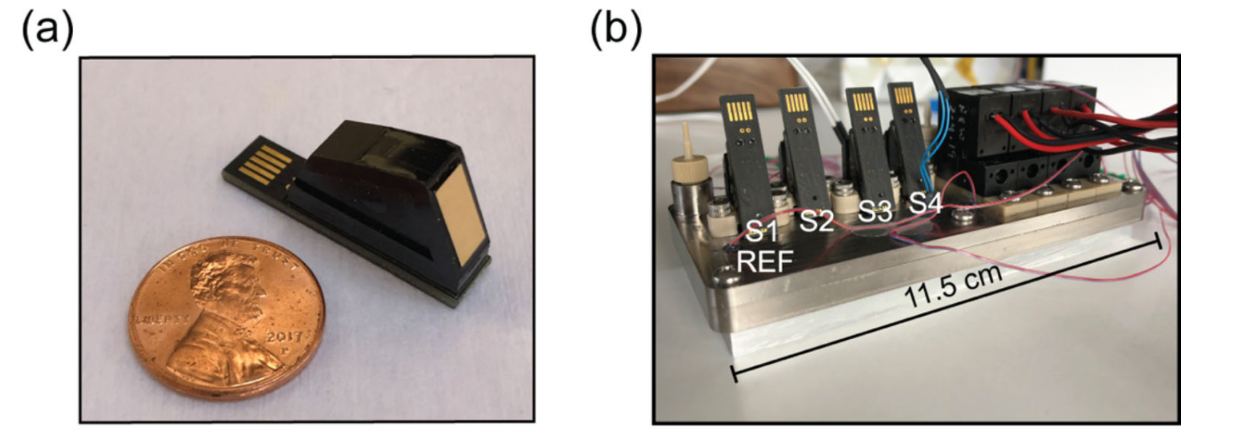
Would you have ever thought it possible to send a mobile, robotic laboratory off into a lake to monitor for harmful algal bloom (HAB) toxins and report results back to you anywhere in the country? Thanks to scientists from NOAA’s National Centers for Coastal Ocean Science (NCCOS), NOAA’s Great Lakes Environmental Laboratory (GLERL), and partners at Monterey Bay Aquarium Research Institute (MBARI), this possibility is now a reality. The team recently completed the first underway measurements of microcystin (MC) — a potent liver toxin produced by the cyanobacteria that cause HABs in the Great Lakes — using an uncrewed system developed by MBARI engineers known as the long-range autonomous underwater vehicle (LRAUV). Details of this groundbreaking milestone are published in the journal of Limnology and Oceanography: Methods.
The paper describes the first-ever use of an LRAUV carrying a surface plasmon resonance (SPR) sensor engineered by MBARI and integrated with their robotic Environmental Sample Processor (ESP) to generate near real-time data on cyanobacterial HAB toxin levels in western Lake Erie. This SPR/ESP/LRAUV system is capable of conducting targeted toxin measurements and transmitting the results back to shore in under two hours, and can be piloted remotely to sample areas of interest within and adjacent to a developing or ongoing bloom. The spatial extent and intensity of a bloom, including the desired sampling locations, can be assessed and identified in several ways, including a uniquely powerful onboard chlorophyll-based “search and sampling” algorithm; a co-deployed mapping LRAUV; or satellite and hyperspectral imagery (limited to a depth of 1–2 meters). The SPR toxin measurements are made with NCCOS-designed and fabricated MC sensors, and water samples obtained and analyzed by GLERL were used to confirm the system’s ability to provide accurate MC data.
The SPR/ESP/LRAUV system complements existing satellite, aerial, and manual sampling cyanobacterial HAB survey techniques, and data generated by this system could be used to enhance predictive models that support both NOAA’s harmful algal bloom forecasts and the US National HAB Observing Network. This system has also been used to advance NOAA’s uncrewed ‘omics-targeted adaptive sampling capabilities for characterizing the biology and dynamics of Lake Erie cyanobacterial HABs.

b) Four of these sensors are arranged in series and mounted to a temperature-controlled titanium microfluidic manifold designed and fabricated by MBARI engineers. Credit: Ussler et al. 2024.
This highly successful field trial of the SPR/ESP/LRAUV system demonstrated its potential to improve early warning capabilities of bloom models and forecasts by enabling continuous cyanobacterial HAB toxin measurements, not obstructed by cloud cover or penetration depth of satellite remote sensing. Moreover, the system’s ability to concurrently assess the biomass and toxin levels of a bloom reinforced the fact that bloom biomass alone is not a reliable indicator of toxin presence or concentration. Such observations highlight the need to acquire actionable, near real-time toxin data to support decisions by water managers to protect public health and safeguard local economies from adverse cyanobacterial HAB impacts.
The NOAA components of this work were supported by the NOAA/OAR AUV Testbed Program, the NOAA/OAR Omics Program, and NOAA/NOS/NCCOS operational funds.
